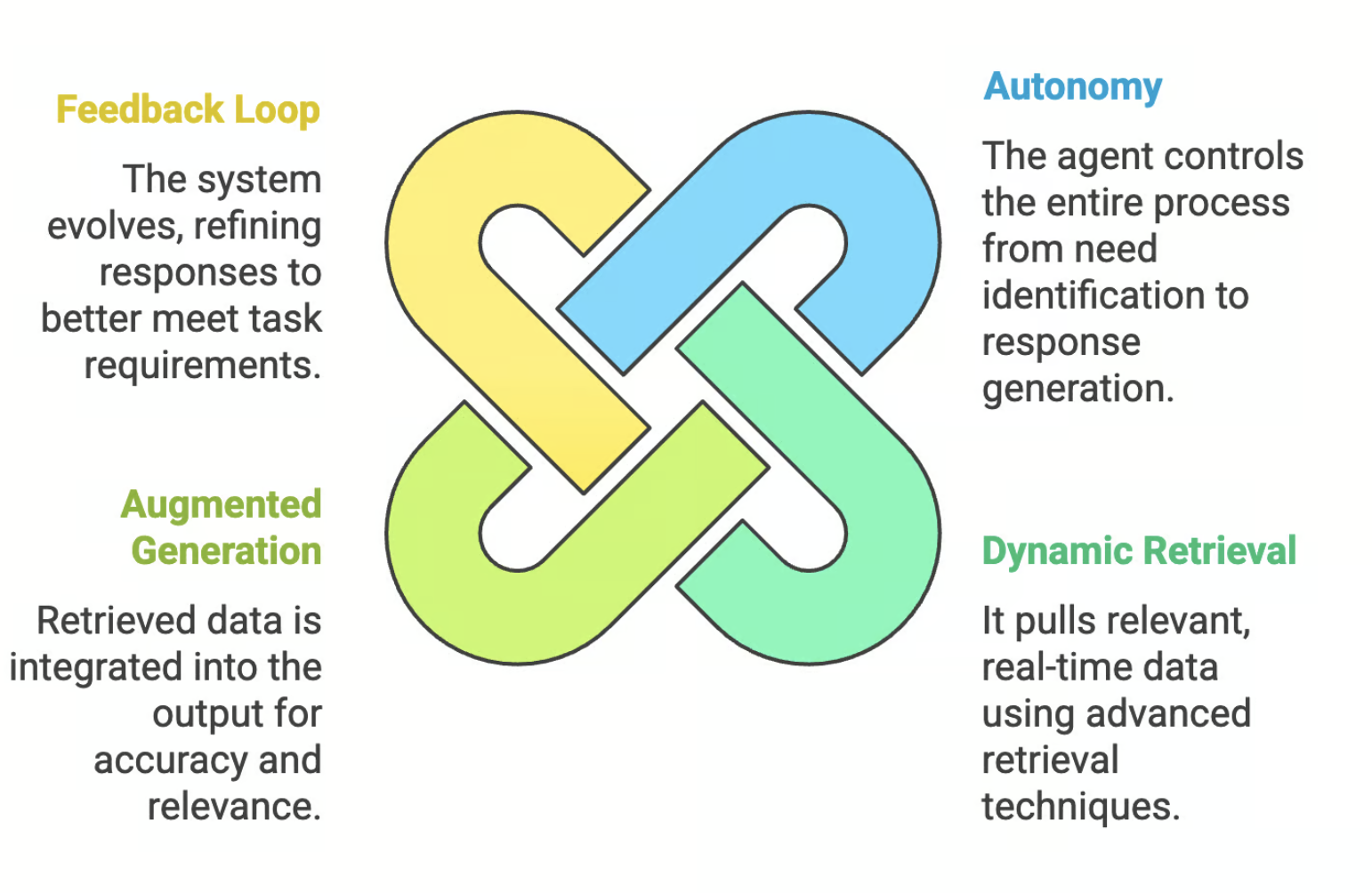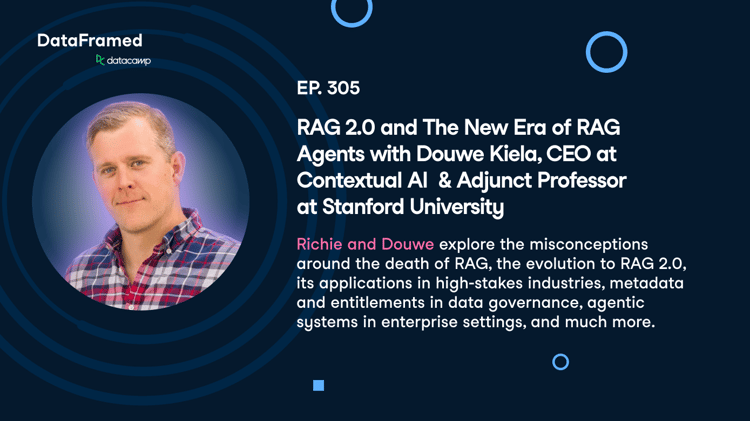Course
Agentic RAG combines agentic AI’s decision-making with RAG’s ability to pull in dynamic data. This makes AI systems more independent, flexible, and capable of tackling real-world problems independently.
In this blog, I will explain what agentic RAG is, how it works, compare it with traditional RAG, and I will also discuss the applications and challenges of agentic RAG.
Multi-Agent Systems with LangGraph
What Is Agentic RAG?
Before diving into agentic RAG, let’s clarify its two foundational components: AI agent and RAG.
An AI agent is an autonomous entity capable of perceiving its environment, making decisions, and taking action to achieve its goals. Agentic AI takes this autonomy further by incorporating reasoning and planning, enabling agents to be proactive instead of merely reactive. This allows AI to determine its next action independently instead of waiting for instructions.
On the other hand, RAG (Retrieval-Augmented Generation) bridges the gap between static AI models and the constantly changing world. Instead of relying solely on pre-trained knowledge, RAG systems dynamically retrieve up-to-date information from sources like APIs or databases, enabling them to generate contextually accurate and relevant responses. I find RAG useful in fields like healthcare, education, and business, where real-time data is critical.

Now imagine combining agentic AI with RAG. The result is an AI system that not only knows what needs to be done but also figures out where to find the information it needs to make it happen. It’s like having an AI assistant that doesn’t just follow orders but actively solves problems on its own.
How Does Agentic RAG Work?
Agentic RAG has four pillars: autonomy, dynamic retrieval, augmented generation, and feedback loop.

Autonomous decision-making
Agentic RAG identifies what’s needed to complete a task without waiting for explicit instructions. For instance, if it encounters an incomplete dataset or a question requiring additional context, it autonomously determines the missing elements and seeks them out. This independence allows it to function as a proactive problem-solver.
Dynamic information retrieval
Unlike traditional models that rely on static, pre-trained knowledge, agentic RAG dynamically accesses real-time data. It uses advanced tools like APIs, databases, and knowledge graphs to fetch the most relevant and up-to-date information. Whether it’s current market trends or the latest research insights, this ensures its outputs are timely and accurate.
Augmented generation for contextual outputs
Retrieved data isn’t presented as-is—instead, agentic RAG processes and integrates it into a coherent response. It combines external information with its internal knowledge to craft outputs that are accurate, meaningful, and tailored to the context. This capability elevates it from a mere information retriever to an intelligent assistant.
Continuous learning and improvement
The system incorporates feedback into its process, enabling it to refine its responses and adapt to evolving tasks. Each iteration makes Agentic RAG smarter and more efficient, much like a human improving their skills through experience. This feedback loop ensures long-term performance enhancement.
Agentic RAG vs. Traditional RAG
Traditional RAG systems operate reactively, depending heavily on predefined queries and explicit human guidance at each stage of the data retrieval process. These systems are limited by their reliance on structured input and their inability to deviate from the given instructions. Essentially, they function as static information retrieval tools, retrieving data based solely on the specific query provided. This rigid approach limits their adaptability and problem-solving capabilities.
A good analogy for understanding traditional RAG would be going to a library with a specific list of books—you need to know exactly what you’re looking for, as the system won’t assist beyond your instructions.
In contrast, agentic RAG systems are designed to be proactive and autonomous. By continuously analyzing the context and user intent, agentic RAG systems can autonomously retrieve and integrate relevant information from diverse sources, including real-time data streams and external APIs. This proactive approach enables them to generate comprehensive and contextually relevant responses without requiring explicit human intervention.
Using the same analogy, agentic RAG is like hiring a research assistant who not only finds the best resources but also organizes and summarizes them into a polished report, significantly saving time and effort.
Applications of Agentic RAG
Let’s explore some of the applications of agentic RAG:

Customer support
Beyond simply fetching information, autonomous agents can use agentic RAG to adapt their responses to the specific context of a customer's issue. For instance, if a customer is inquiring about a delayed order, the agent can not only provide the relevant shipping information but also proactively offer solutions such as expedited shipping or discounts.
Agentic RAG can also enable agents to learn from past interactions, continuously improving their ability to handle complex customer inquiries and personalize their support.
Healthcare
The ability of agentic RAG to synthesize up-to-date medical research has the potential to improve clinical decision-making. By providing clinicians with evidence-based recommendations tailored to a patient's specific condition and medical history, it can improve diagnostic accuracy and treatment outcomes.
Moreover, agentic RAG can assist in identifying potential drug interactions or adverse effects, enhancing patient safety. Additionally, it can aid in medical education by providing medical students and residents with access to relevant research and clinical guidelines.
Education
Intelligent tutoring systems powered by agentic RAG can adapt their teaching strategies to individual student needs, providing personalized learning experiences. By dynamically retrieving and presenting educational content based on a student's current understanding and learning style, these systems can optimize learning outcomes.
Agentic RAG can also facilitate collaborative learning by enabling students to access and share relevant information with each other.
Business intelligence
Agentic RAG can improve the process of generating business reports by automating the retrieval and analysis of key performance indicators (KPIs). This can save analysts countless hours and enable them to focus on higher-level tasks such as interpreting insights and formulating strategic recommendations.
Additionally, Agentic RAG can assist in identifying trends and patterns in business data, enabling companies to make data-driven decisions and stay ahead of the competition.
Scientific research
Researchers can make use of agentic RAG to quickly identify relevant studies, extract key findings, and synthesize information from diverse sources.
Challenges of Agentic RAG
Here are a few challenges of agentic RAG:
- Retrieval accuracy: Ensuring the data fetched is relevant and high quality.
- Integration complexity: Balancing the interaction between agentic AI, retrieval systems, and generative models can be difficult.
- Bias and fairness: Avoiding biases in both training data and retrieved content remains a critical concern.
- Scalability: Managing real-time operations at scale can come with many scalability challenges.
Conclusion
Agentic RAG combines the autonomy of agentic systems with the dynamic data retrieval of RAG. Over the coming years, the AI workflow will probably shift from tools that assist to systems that act, adapt, and deliver meaningful results with minimal human intervention.
Project: Building RAG Chatbots for Technical Documentation
Senior GenAI Engineer and Content Creator who has garnered 20 million views by sharing knowledge on GenAI and data science.

